
Several years ago, my brother called early one Saturday morning. I knew something was wrong because he never rang before my first coffee. Rob had recently purchased a dilapidated home on Long Island, one that required extensive renovation to make it habitable. He’d already dealt with the discovery of asbestos, and if he’d sounded annoyed then, he sounded terrified now.
“I found a bone,” he said. “Buried in the backyard. Right next to the house. Actually, a little under it. I don’t know what to do. I think it’s a femur.”
He texted me a picture. It appeared thick with a rounded edge on one end. Maybe it looked leg-like, but I couldn’t appreciate size in the absence of any comparative reference. So, Rob sent another pic, and in this image, he dangled the bone from two fingers. With his arm extended as far from his torso as possible, and his eyes wide with terror, he looked as if he’d plucked a femur from a real-life version of the game Operation.
The bone appeared to have shrunk now that I could gauge its true size. On the scale of intimidation, it barely ranked above a jagged-edged rock.
“Oh,” I said, suppressing laughter. “It’s much smaller than it looked in the other pic.”
“Exactly.” Rob’s voice trembled. “It’s too small to have come from an adult.”
“Maybe it’s from a buried pet?”
“You don’t understand. It was under some of the old foundation — like a crawl space. Obviously, someone tried to hide it.”
He had a point. A bone found beneath concrete did seem more sinister than a bone buried in plain dirt. My sense of humor died instantly, and in its place, a series of intrusive images flashed through my mind. I saw a masked man, a shovel and missing children pictured on milk cartons.
“Oh, no. You think it’s a bone from a child?” I asked.
“Has to be. Holy hell. What should I do?”
“I don’t know,” I replied. I could feel the anxiety creeping in. “Did you find anything else?”
“My guys are still digging.”
I hoped they wouldn’t uncover a skull. Or worse: an entire skeleton.
“I can’t move my son into this place,” Rob said. “This might’ve been the home of a serial killer!”
My heart pounded. “You need to stop talking to me and call the police.”
“Hell no. They’ll start an investigation. It’ll take months, maybe even a year. I won’t be able to sell a crime scene. We’ll have nowhere to live.”
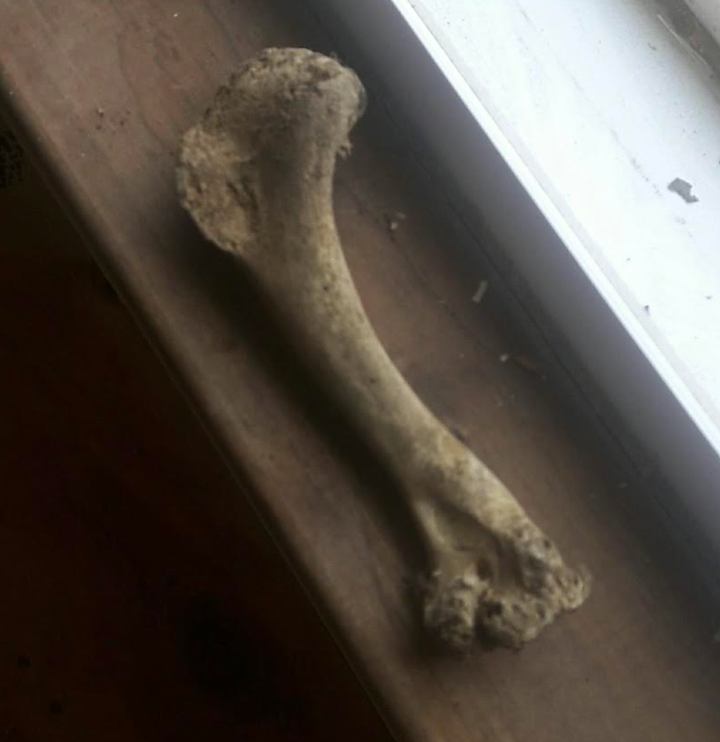
That’s the moment we started to argue, because in my estimation, temporary homelessness seemed a small sacrifice on behalf of a murdered child. I hadn’t consciously decided to accept my brother’s hysterical premise — my body activated its sympathetic nervous system without my consent because that’s what sympathetic nervous systems do. Emotional interaction with my brother often triggers that switch. My chest tightened with an impending sense of doom, and suddenly, I was a child again.
***
Growing up in the 1980s, adults didn’t coddle children like they do today. Our parents made us sleep in our own beds, even after taking us to see the movie “Poltergeist.” Santa once brought me a Ouija board. And Dad enjoyed chasing us into the (unfinished) basement while dressed like Satan in a horned rubber mask.
When I was 12, our parents bought a half-century-old Tudor home. Without money to fix the place, we endured a range of discomforts from leaking ceilings to a cesspool that routinely backed up into the laundry room. When friends called our house haunted, we’d crack jokes.
Grit and humor overcame a lot, but it couldn’t overcome pure evil, and our house contained a history of evil. We not only felt it; our father confirmed it on a night I’ll never forget.
Prior to moving in, our parents hired professionals to paint the interior. One evening, a few weeks shy of Halloween, Dad insisted we drive over to check their progress. We arrived after nightfall.
Dad carried a flashlight because the house still contained no lights. We crept across drop cloths, inhaling the stench of fresh paint. In the living room, Dad aimed the flashlight at the widest expanse of wall. That’s where we saw the first one: a life-sized cross, the symbol of Christianity, painted in white over gray spackle. Dad said something about the painters being overly religious, and then he led us through the remaining rooms where crosses marked each wall.
Rob, who was only nine, whimpered as we headed upstairs. Mom, who remained quiet throughout this tour, took him outside to wait in the car. As the oldest kid, I wanted to appear brave in front of my father, so I continued counting crosses.
When we couldn’t find a single cross in one bedroom, Dad laughed. “Seems they missed a spot.”
I finally relaxed. If Dad chuckled, then this must be funny. “Yep, those weirdos totally messed up,” I said, trying to giggle.
“Don’t laugh at them.” Dad shut the flashlight off. “They painted these crosses for our protection.”
“Protection from what?”
Dad switched the flashlight back on. He held it under his chin, pressing the flashlight against his flesh. This made the light glow an eerie red.
“I’ll tell you, but don’t tell Robby. He’s too little.”
I promised not to tell.
He nodded. “The thing to keep secret is that the painters found a stash of Polaroids hidden in the hall closet. They were photos of satanic rituals,” Dad said. “And that evil will always lurk inside this house. Only Jesus can protect us now.”
With that, Dad shone the flashlight toward the staircase and headed down. I pretended to be invisible as I followed close behind. The day we finally moved in, I struggled to breathe. Especially on the landing at the top of the stairs.
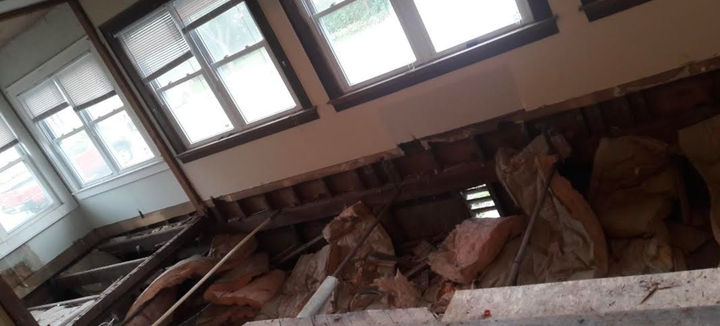
Despite surviving that childhood residence, my brother and I were now triggered by the slightest domestic scare — in this case, a mere bone. We continued arguing over what to do about it. Meanwhile, my husband, Tomer, returned from his morning walk to find me yelling about a potential burial ground of missing persons.
I put Rob on speakerphone. We explained everything from the femur to our moral debate.
But Tomer reacted with nothing but a casual shrug. “It’s probably from an animal.”
“No, we already ruled that out,” I said.
Rob grew more hysterical. “It’s not just a dirty bone, Tomer. It was beneath old cement.”
Tomer barely raised an eyebrow. “Maybe the bone was there before the house was built.”
We hadn’t considered that.
“Send me the picture,” Tomer said. “I’ll forward it to some physician friends who can probably tell if it’s human or not.”
Within minutes, Tomer’s cell chimed multiple times. Everyone, including an orthopedist, concluded the bone wasn’t human.
“That’s settled then,” Tomer said.
Rob laughed for a solid minute before saying goodbye. We had nothing planned for the day, so Tomer suggested we hit the beach.
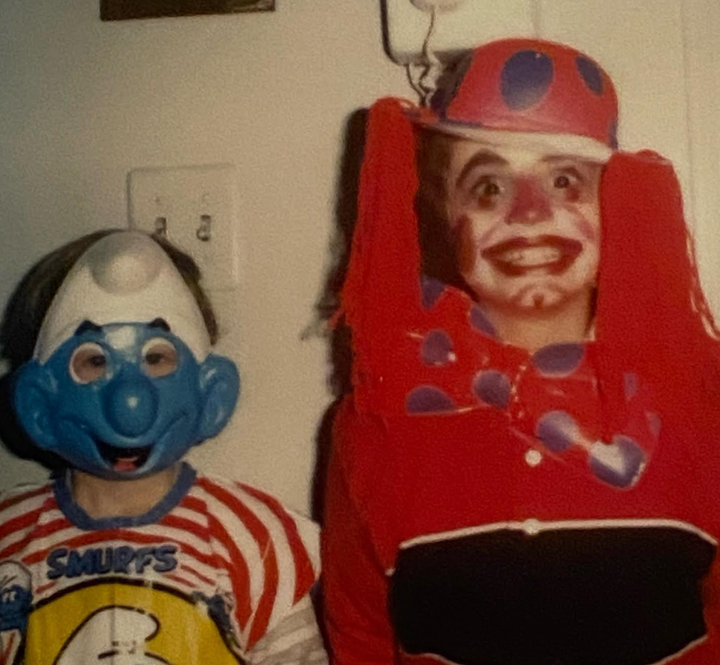
But unlike my brother, I’m not quick to drop a topic.
“No beach for me. I need to figure this bone situation out.”
Tomer frowned. “I thought that’s what we just did.”
“Not the bone itself,” I said. “I need to figure out our reaction to the bone. Clearly, we’re abnormal.”
“Nah,” Tomer shook his head. “You guys lived in a haunted house. If I’d grown up in that place, I’d freak out over a bone, too.”
This comforted me because Tomer is known for being level-headed.
I told him the story of the painted crosses. Though my father died before Tomer ever had the chance to meet him, he’d heard many similar tales. Somehow, I’d skipped this one.
When I finished recounting the story, Tomer said, “I wonder how much your dad tipped those painters to pull that stunt.”
I didn’t understand.
“Well,” Tomer explained, “From what you’ve told me, your dad wasn’t the handiest guy. He probably gave the painters 20 bucks to prank you guys.”
I’d never considered the possibility of a hoax, but Tomer’s theory made sense because Dad truly enjoyed terrorizing us. In other instances, however, we’d witnessed the rubber mask come off, or we’d known the horror films were fictional. Even the Ouija board, I’d eventually realized, was made by the same toy company that produced other games such as Monopoly and Clue. But that Tudor Home! The satanic haunted house story evaded suspicion for decades, and to this day, I remain fearful of sleeping anywhere older than brand new.
Tomer’s revelation about the house offered no relief. Instead, I felt defeated by my own stupidity. I hated that a mere bone could send me hurling back to a state of childlike reactivity. I feared it would happen again. What would be the next bone?
“Cheer up,” Tomer said. “By tomorrow, you’ll laugh about this.”
He was right. The upside to my foolishness was that after things settled, I’d have new material for an amusing story. I buried the bone in my hippocampus, and over the next several years, I’d occasionally pluck it from memory for use as a comedic prop. For instance, while attending a funeral, I pulled Rob aside, pointed toward a freshly dug hole at the cemetery and whispered, “Do you still fear the femur?” We both cracked up, and an otherwise somber day lightened.
I imagined I’d laugh about that femur all the way into my own grave. But then, during COVID quarantine, the bone took an unexpected turn.
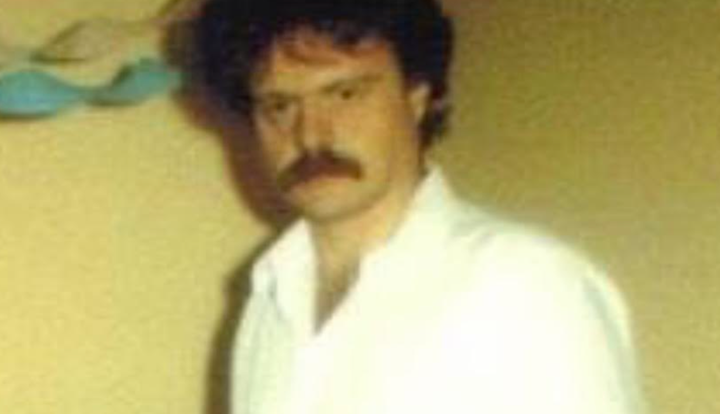
Desperate for relief from the dismal state of both the country and world at large, I searched for humor. I craved a real escape, something more than a meme. Surely, I could not be the sole person longing for laughter? But with nothing amusing out there, I took matters into my own hands. I could be funny without controversy by developing the right style — that of a benevolent humorist. At the peak of my grandiosity, I fancied myself the next Nora Ephron.
Fortunately, I maintained enough self-awareness to realize I could benefit from some help. So, I joined an online writing workshop. Rob’s bone seemed a fun and quirky thing to write about, so I dusted off the old femur, metaphorically speaking — and lucky me — the writing was pure bliss. I hadn’t felt such joy in years. When my essay was up for critique, I logged on to Zoom as if showing up for the virtual launch of my very own Netflix special.
As is customary in the modern writing workshop, people noted the essay’s strengths first. I listened gleefully. Then, the critique started.
“I just don’t know how to read this,” one person remarked. “I thought it was a comedy at first. But actually, it’s a sad story.”
I nearly spat out my tea. Who was this hypersensitive reader through which no humor could penetrate?
But then, another person expressed a similar opinion. “I was laughing all through the beginning section, but then I felt guilty for laughing when I got to the part about what your father did to you. Is this comedy or tragedy?”
Someone else argued that it didn’t matter, that most comedy stems from tragedy in the first place, but I barely registered whatever else was said, because clearly, I was no Nora Ephron. Instead, I proved to be an unreliable narrator, someone as untrustworthy as my father turned out to be. I hadn’t intended to trick readers with a comedic lure; certainly, I didn’t want anyone to suffer a shame-inducing reading experience. Guilt crept in.
And it wasn’t only my narrative persona at stake. My sense of reality felt threatened, too. I hadn’t anticipated this. My father had already cost me 20 years of therapy with a trauma specialist, and I couldn’t go back because my therapist had retired. To find someone new, to start all over — just thinking about it triggered flashbacks of the game Candyland: I saw little me in pigtails, about to claim the candy castle, but the gingerbread man sent me back to the beginning. I didn’t need a psychotherapist to explain that Candyland symbolized my childhood. I didn’t want to play that game again. I lacked the stamina to bring someone new up to speed.
So, in lieu of a licensed practitioner, I called my brother.
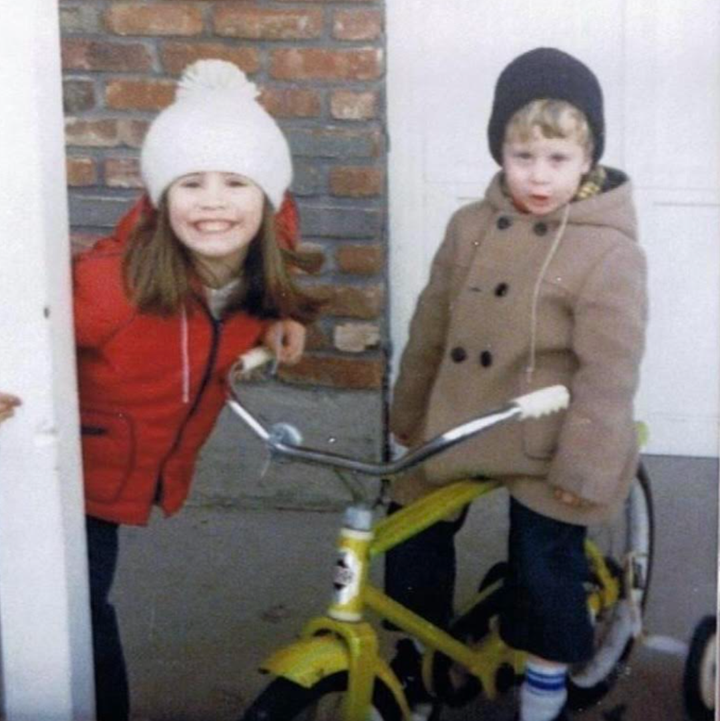
“I wrote an essay. It’s hard to explain. But it’s freaking me out.”
“Email it to me,” he said.
I sent it and waited. Rob wrote back. “Omg I love it! We should make a script out of this.”
I called him immediately.
“That’s freaking hilarious,” he said. He sounded serious.
“I don’t know how to tell you this, so I’ll just say it,” I told him. “What we think is funny is apparently not funny. In fact, some people find my essay a bit sad.”
“Stop.”
“It’s true,” I replied. “Actually, this reminds me of what happened with the firehose story.”
When Rob and I were little, maybe 7 and 10, I awoke to Rob’s screams. I ran into his bedroom to find our father urinating all over him. No matter how we yelled, Dad kept peeing all over Rob’s face, body and bed. I can still hear the sound of his seemingly infinite projectile hitting the walls. But the following morning, Dad cracked jokes. “I dreamed I was a fireman and that I held a huge firehose.”
He laughed, so we laughed. But when I reiterated the story a decade later to some college friends, nobody even smiled. Therapy eventually helped me understand why the bit didn’t land well — so, how could I be in this situation again?
Now, in conversation with my brother, I shared my newest fear — that my perception of reality was irreversibly distorted. “All that therapy and I’m still not normal,” I told him.
Rob sighed. “Why didn’t he just tell us the truth? If he’d explained he was drunk, it would’ve been way better than thinking I deserved to get peed on. That was literally one of the worst moments of my life.”
When Rob said this, when he expressed empathy for his younger self, my eyes welled with tears. I could feel sadness for him — just not for me.
***
As children, we’d lacked a real reason for our dad’s abusive behavior. We didn’t know about Dad’s drugs and alcohol — we only knew his fists, his leather belt, and the gun stored in his armoire. Lacking any coherent narrative, we accepted whatever fictions we were told.
After talking with Rob, I grappled with the sequence of events triggered by the bone and leading up to the writing workshop. I could intellectually grasp that my father’s behavior revealed a sadistic streak — I knew this — but I still thought my sense of humor protected readers from my father’s cruelty. What had I done wrong?
Sensing a dead end, I abandoned the essay. Months passed. Then, one afternoon, I spotted a neighbor walking his dog. The dog clenched a bone. Inevitably, I remembered my brother’s bone, and it pointed me in a new direction one last time.
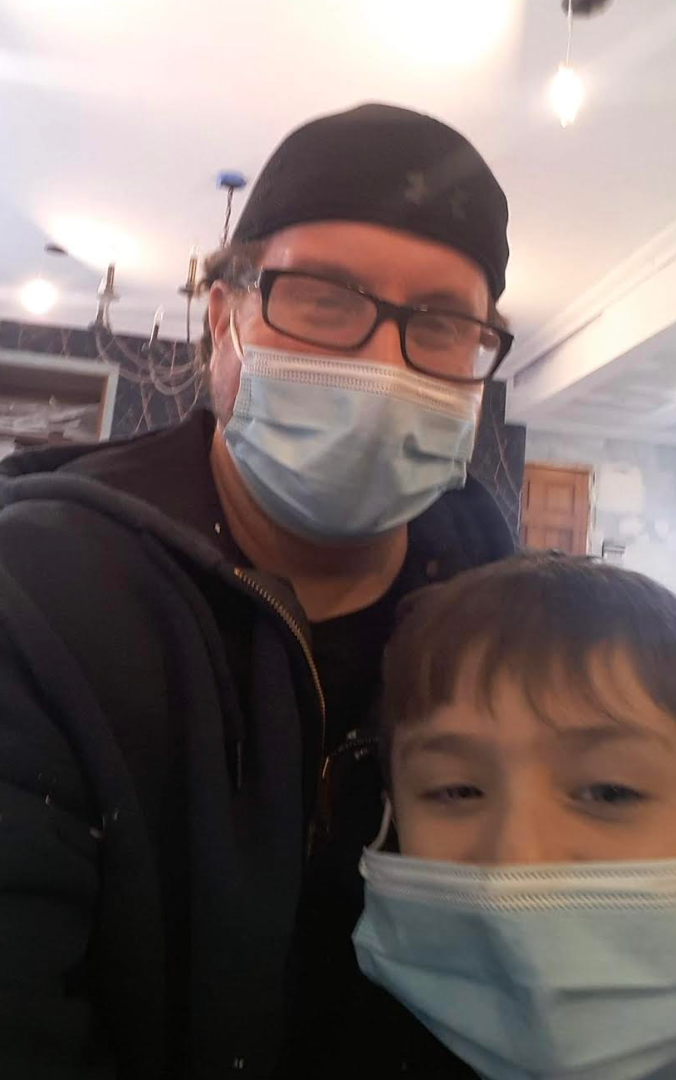
I hurried home and opened the most recent draft of this essay. This time, I read not for entertainment but for clues. I decided my essay was neither comedy nor tragedy — it was a mystery of my own making. I started working on it again. The more I wrote, the further I strayed from my original intention to be funny. Now, I sought nothing but understanding, but my writing felt too heavy. I abandoned yet another draft.
It took numerous attempts and even more drafts before I realized what had happened during the workshop and what still happens whenever I read this piece: I don’t register sad feelings because they’re disassociated. I can access negative emotions such as fear and anger and anxiety, and I can feel sadness on behalf of someone else’s suffering — but it’s a rare event when I feel sorrow for myself. Is this a poignant moment in my essay? I wonder. What I do feel for certain is relief. I can relax now that I’ve finally solved the mystery.
After I’d written this essay’s almost final draft, I understood exactly what my father had done to me. How the trauma I faced as a child had nothing to do with living in a supposedly haunted house — and yet, it haunted me just the same. Acknowledging what I’d survived — and seeing it clearly — finally cleaved it clean of the humor I’d wrapped it in for all those years.
This amounted to a breakthrough I didn’t expect to experience, much less through writing an essay. But I’m thankful I did. I even stopped fantasizing about my therapist reopening her practice. I’m confident that I can make sense of things on the page, even if my own words create new challenges along the way. And let’s be real: Writing is way cheaper than paying for time spent on someone else’s couch.
In the end, there’s also renewed gratitude. I’m so lucky to have my brother. We don’t always agree when it comes to the world at large, but we both know the truth about our father, and despite everything, we still manage to make each other laugh.
Jen Gilman Porat’s work has appeared in Longreads and The Week. She is currently working on a memoir that explores a misguided journey through the adoption industry. She’s also working on (mostly) humorous essays about marriage and parenthood. An avid fan of experimental structures, she hopes to finally finish a braided essay she’s been wrestling with for years. You can find her on Twitter @JenGilmanPorat.
Do you have a compelling personal story you’d like to see published on HuffPost? Find out what we’re looking for here and send us a pitch.
Need help? In the U.S., call 1-800-799-SAFE (7233) for the National Domestic Violence Hotline.
